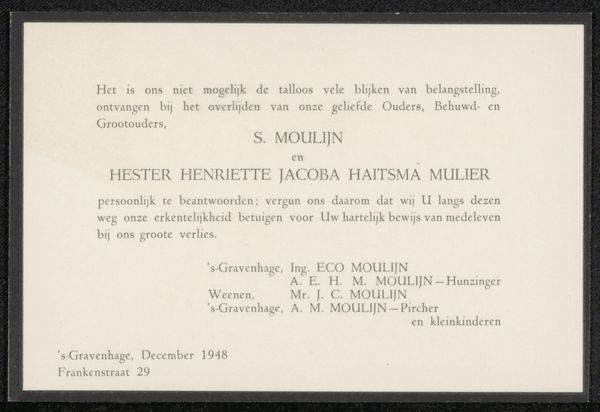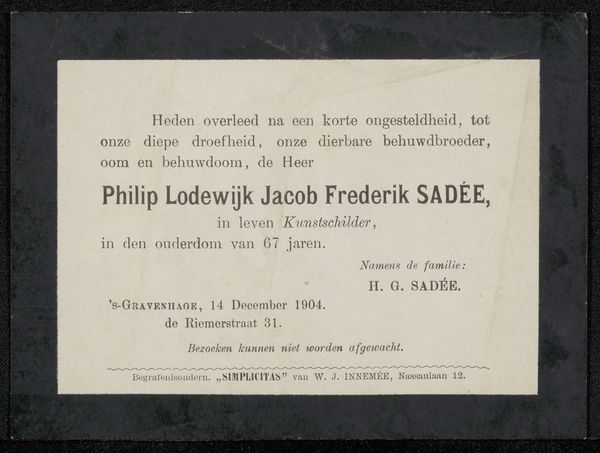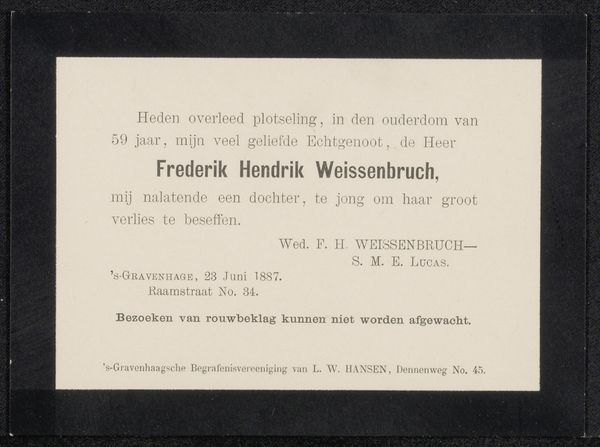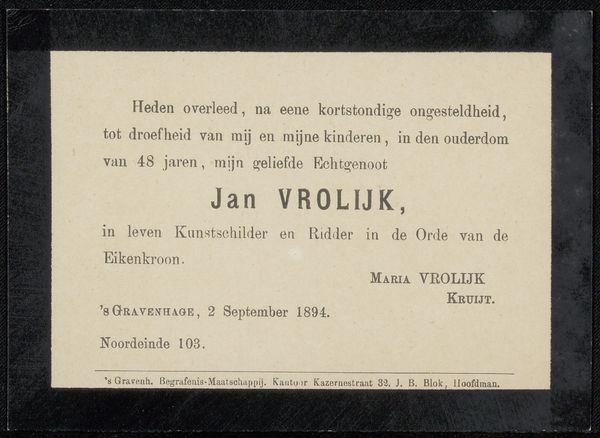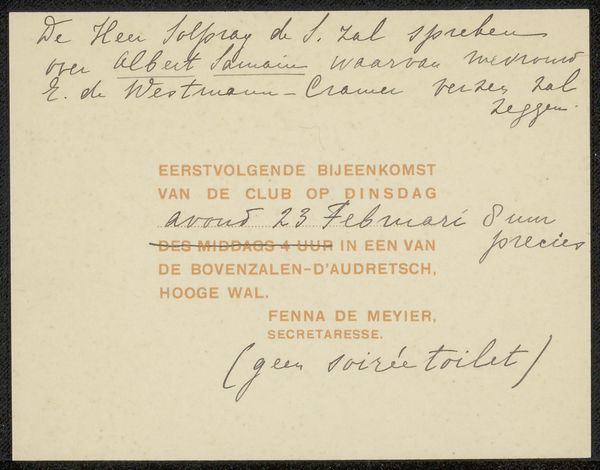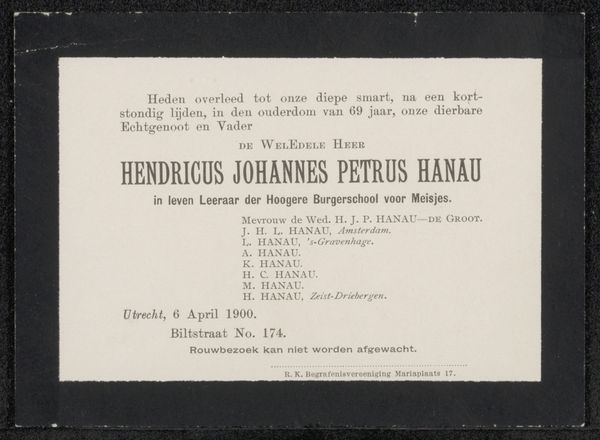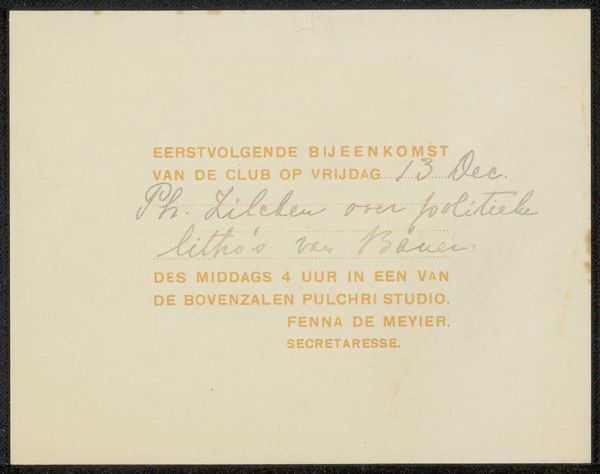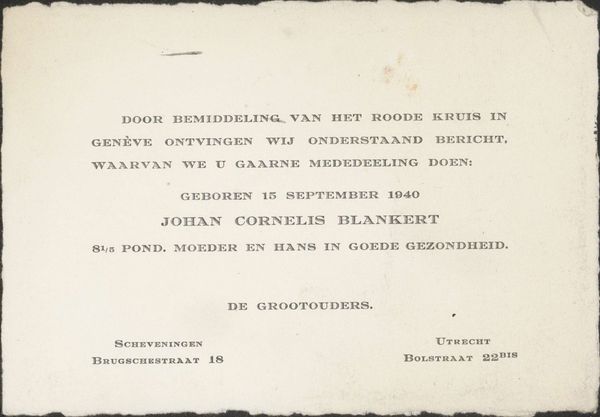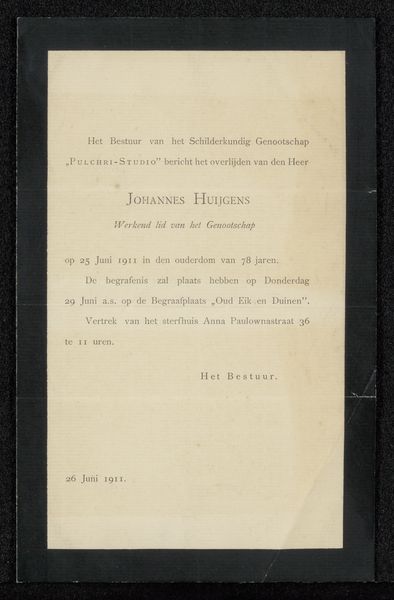
print, paper
#
aged paper
#
still-life-photography
#
toned paper
#
muted colour palette
# print
#
paper
#
historical font
Copyright: Rijks Museum: Open Domain
Editor: This piece, "Overlijdensbericht aan Philip Zilcken," is possibly from sometime between 1890 and 1898, made by an anonymous artist. It is a print on paper, a death announcement, really, displayed at the Rijksmuseum. It's…stark, isn’t it? In its simplicity, almost bureaucratic. What story does this document tell you, beyond the obvious? Curator: The interesting thing is, an official announcement such as this one speaks volumes about the intersection of art, society, and death in that period. These weren't simply personal communications. Circulating news of a death publicly like this—who did it serve? Was it a means of solidifying social bonds, managing a reputation, signaling a specific societal standing? Think about it in the context of 19th-century Dutch society. How might someone's profession, even their "art," become part of how they were publicly remembered and positioned in the social hierarchy? Editor: I suppose it's about controlling the narrative, even after death? A family wanting to emphasize that Jan Pieter was "in life an artist." Giving a certain legacy. Curator: Exactly. And note the choice of font, the layout. Does that communicate an official status? A family announcement in that period wasn't only a personal affair but a statement of identity and belonging. Consider the role of institutions like the 's-Gravenhaagsche Begrafenisvereeniging… how did these burial societies influence not only the funerary rituals, but also the visual language of mourning? What's the broader cultural attitude about mourning being displayed publicly? Editor: It sounds like there’s a lot to unpack here, regarding death and its display. I wouldn't have considered the announcement itself as an artifact, or an intentional declaration. Curator: Right, this little document opens up a wider conversation. It urges us to see art, or even death, not in isolation but as embedded within social and political frameworks. And hopefully to question what biases exist when museums get to decide what of this material gets preserved. Editor: I see that now. The social context really changes the way you view this object! Thanks.
Comments
No comments
Be the first to comment and join the conversation on the ultimate creative platform.

